Featured image: Examination of a Witch, by T. H. Matteson, 1853
At least four Ipswich women were accused during the witchcraft hysteria. Rachel Clinton was arrested but was never hanged. In 1692 Joan Braybrook and her 40-year-old stepdaughter Mehitable were both accused of witchcraft and landed in jail, but they were eventually released, the trials having come to an end before the judges heard their cases.


Elizabeth Jackson Howe was arrested on May 28, 1692 and was hanged in Salem on July 19, 1692. This narrative is the story of superstition, religion, greed, loss and revenge by the accusing families.
Elizabeth Howe was born circa 1635 near Rowley, Yorkshire, England. When she was 3 years old, the Jackson family and other residents of that town immigrated to the Massachusetts Bay Colony and were among the earliest settlers of Rowley MA.
Elizabeth and her husband James Howe resided on outer Linebrook Road in an area known then as Ipswich Farms. James Howe lost his sight at about the age of 50 and Elizabeth assumed the dual responsibility of managing the family and the farm. She readily took charge, making decisions well beyond the accepted level for Puritan housewives.
There was long-standing friction between Elizabeth Howe and her neighbors Samuel Perley and his wife Ruth, whose brother had married Elizabeth’s sister Deborah in 1662. For several years their daughter Hannah had experienced episodes in which she would fall into fits and say she was being pricked by pins, which Hannah claimed was the work of Elizabeth Howe. She told her parents “I could never afflict a dog as Goody Howe afflicts me.” The Perleys took the child to several doctors, the last of whom told them she was “under an evil hand”. Reverend Phillips of Rowley would later testify that he had visited Hannah as she lay ill and that Hannah had screamed that Goody Howe was in the room, going in and out of an oven. He rebuked her and her brother Samuel for crying out “Say Goodwife Howe is a witch! Say she is a witch!”. Young Hannah eventually “pined away to skin and bones and ended her sorrowful life”. The standoff between the Howe and Perley families continued for years, during which time Elizabeth Howe was prevented by the Perleys from being admitted into the Ipswich church.
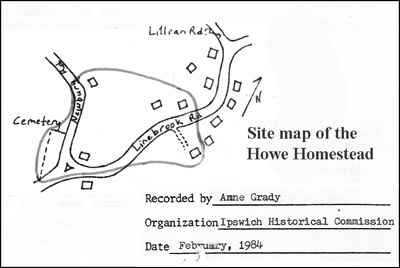
Tom and Ann Putnam were from an old family in Salem Village (Danvers) family that had a long-standing dispute with the town of Topsfield, into which they claimed some of their land extended. The Putnams had a reputation for being vindictive and taking the law into their own hands. Concerned that Putnam was cutting trees not belonging to him, the town appointed several men, including John Howe, to ask the Putnams to show the deeds to the land they claimed, which the Putnams were unable to produce.
A group of impressionable pre-teen girls in Salem Village, under the care of a Barbados slave named Tituba working for Rev. Samuel Parris, became fascinated by her stories about black magic. Parris beat Tituba until she confessed herself as a witch. In February 1692 the public accusations of witchcraft began, and 12-year-old daughter Ann Putnam, the daughter of Thomas and Ann quickly became the ringleader of the afflicted girls, with no discouragement from her mother. Thomas Putnam signed ten of the 21 formal complaints issued against accused witches. The Salem Witch Trials would soon begin, and he would sit on the jury.
Rebecca Nurse of Salem Village (now Danvers) had been involved in a long-standing dispute with the Putnams, and she was the first resident to be accused. Soon the Perley family revived their long-standing accusations against Elizabeth Howe. On Sunday, May 29, 1692, the constable of Topsfield took Elizabeth Howe into custody, having been charged with “Sundry Acts of Witch-craft done on Mary Walcott, Abigail Williams, and others of Salem Village.” He rounded up Abigail and Deliverance Hobbs and Sarah Wildes of Topsfield who were also from families on the Putnam enemies list.
Conditions in the unheated jails were harsh. The accused were “bound with cords and irons.” In Marion L. Starkey’s The Devil in Massachusetts he writes, “They were periodically subjected by prison officials, especially by the juries assigned to search them for witch marks.” Elizabeth Howe’s friends and family would make regular trips to comfort her, bringing “country butter” and clean linen. James Howe remained true to his wife and visited her in prison each week with the assistance of their daughters Mary and Abigail.
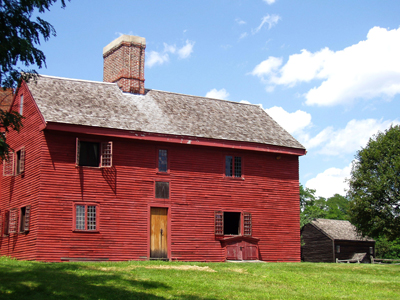
The Court of Oyer and Terminer was conveyed in Salem to weigh the “spectral” evidence, the ghosts the girls claimed to have seen that looked like the people they accused of being witches. The Perley family organized a vicious attack on Elizabeth Howe. In testimony, Samuel Perley stated that a few days after he had first denied Elizabeth’s request to join the church, his cow suddenly went mad and ran into a pond drowning herself. Timothy and Deborah Pearly said their cows would no longer give milk.
Samuel Perley’s son-in-law Jacob Foster testified that he found his mare leaning against a tree and that no matter how much he whipped her she would not move. Joseph Safford, age 90, testified that his wife had been afflicted by Goody Howe’s apparition. Francis Lane testified that she had hired John Perley to transport posts and rails for a fence and asked Elizabeth Howe’s husband James for assistance, but that Elizabeth told her husband that since John Perley was involved, the rails would not do. When they began to build the fence so many rails broke that they had to buy 30 more.
Isaac Cummings, senior, gave testimony that eight years before, James Howe had asked his son Isaac to borrow a horse, which was refused, and that the next day his mare fell down dead. The younger Isaac confirmed the story. His wife testified that Elizabeth had cursed the horse with oil and brimstone. Thomas Andrews testified that he had been called to assist with the mare and had set a pipe of tobacco “under her firmament” to treat the pain and that a blue flame had shot out and set the mare’s hair on fire. They tried this old prescription three times with the same results each time and decided they would rather lose the mare than the barn.
Elizabeth Howe’s brother-in-law John testified that he told Elizabeth that “if she would confess” he would accompany her to Salem, but she had refused. He recounted that the next day at sunset his sow leaped up three or four feet high, gave one squeak, and fell dead. He cut off the ear of the sow and the hand he used to do this became numb, and thus concluded “I suspected no person other than my said sister Elizabeth Howe.” It has been speculated that because James and Elizabeth had no sons, John may have hoped that he would someday inherit his brother’s estate.
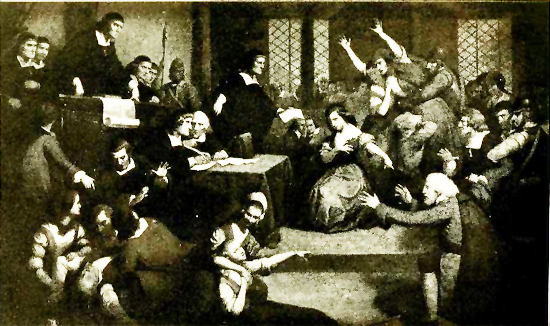
Joseph Putnam, Thomas’ younger brother spoke out against the witch hunts. Elizabeth Howe’s friends and family also rose to her defense. James Howe Sr, age 94, testified that Elizabeth had been a wonderful daughter-in-law for 30 years. Daniel, John, and Sarah Warren swore they had never heard Elizabeth Howe utter an un-Christian word about the accusers. Simon and Mary Chapman testified that the accused had been good to them and that they “never saw any harm by her.”
Joseph and Mary Knowlton told the jury that their neighbor Elizabeth Howe was faithful to her word and honest in her dealings and had expressed no ill feelings toward the accusers. Rowley pastor Phillips described bringing Elizabeth Howe to the Perley house and receiving no confirmation from the children that Elizabeth was causing Hannah’s fits. The Chapmans and Knowltons testified that they had never heard her speak against those who were accusing her and had heard her say “Indeed I pray that God would forgive them for they harm themselves more than me.” How true her prophecy would be.
When asked how she pleaded to the charges made against her, Elizabeth Howe responded, “If it was the last moment I was to live, God knows I am innocent of anything of this nature.” Mary Walcott and Mercy Lewis (who had been Thomas Putnam’s servant) threw themselves to the floor in fits. Ann Putnam screamed that Elizabeth Howe had stuck a pin in her hand.
Elizabeth was then asked, “What do you say to these things?” to which she replied, “Sir, I am not able to give an account of it.” The court responded, “That is strange that you should do these things and not be able to tell how.” The judges had already made up their minds. Cotton Mather, the minister of Boston’s Old North Church would later proclaim that the court was leading the final charge against the Devil’s legions and that the end of the world was at hand. His father Increase Mather, president of Harvard College cowardly failed to take a stand against the court even though he questioned the use of spectral evidence.

Rebecca Nurse was at first found not guilty but the afflicted girls’ outcry was so immediate and intense that the chief judge charged the jury to reconsider. They changed the verdict after not receiving an adequate answer to a question they put to Rebecca, who was partially deaf and did not understand what they were asking.
On June 10, 1692, Bridget Bishop was the first of the accused to be hanged. They hanged Elizabeth Howe on July 19 along with Rebecca Nurse, Sarah Good, Sarah Wildes, and Susanna Martin, and they were buried in a crevice on Gallows Hill.
By September, eighteen of the accused had been hanged and Giles Corey was pressed to death from stones piled on his body for refusing to answer the charges. Public opinion turned against the proceedings. The ministers of Ipswich spoke out against the proceedings and the actions of their fellow pastor Samuel Parris. It is said that the group of accusing girls were brought to Ipswich but were refused permission to cross the bridge into town. The courts issued a written apology on March 18, 1702, in response to public demand. In 1711, approximately 598 pounds were distributed among the survivors.
James Howe died in 1701. Thomas Putnam and his wife Ann died a couple of weeks apart of unknown causes in 1699, he age 47, she 38, leaving young Ann Putnam to raise her nine siblings. In 1706 she recanted her testimony, asserting that she herself had been deluded by Satan. Ann Putnam never married and died at the age of 37. Samuel Perley died in 1707; the date of death for his wife is unknown. There is no record that they ever apologized or recanted their accusations. The Perleys, Howes, Chapmans, Fosters, Conants and Burpee families of Linebrook continued to marry members of each other’s families. The Salem, Danvers, Topsfield, and Ipswich communities eventually put the tragedy behind them, but questions and theories about how the events of 1692 came to be will linger forever.
Related posts:
Resources:
- History of Massachusetts (blog)
- A Short History of the Salem Village Witchcraft Trials: Illustrated by a …
By Martin Van Buren Perley - Records of Salem witchcraft, copied from the original documents, Vol. I (1864)
- Records of Salem witchcraft, copied from the original documents, Vol. II (1864)
- Salem Witchcraft: Comprising More Wonders of the Invisible World, collected by Robert Calef; and Wonders of the Invisible World, by Cotton Mather; together with notes and explanations (1865) by Samuel P. Fowler
- Case files referencing Elizabeth How

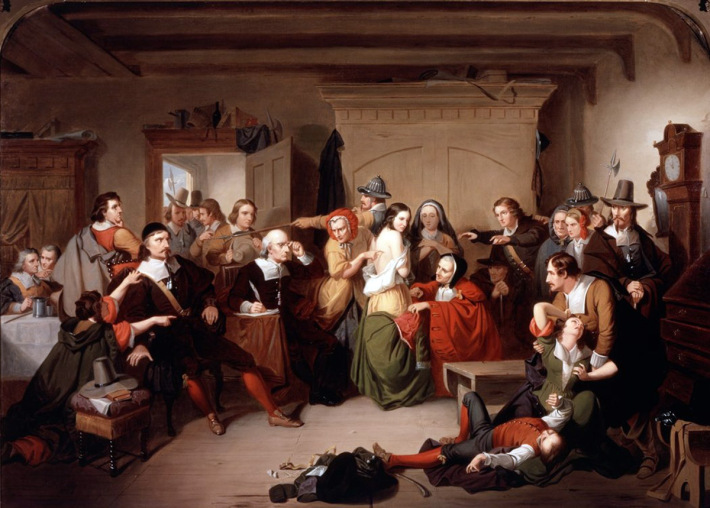
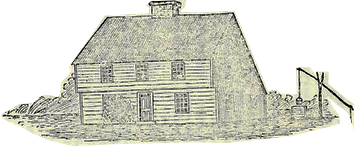
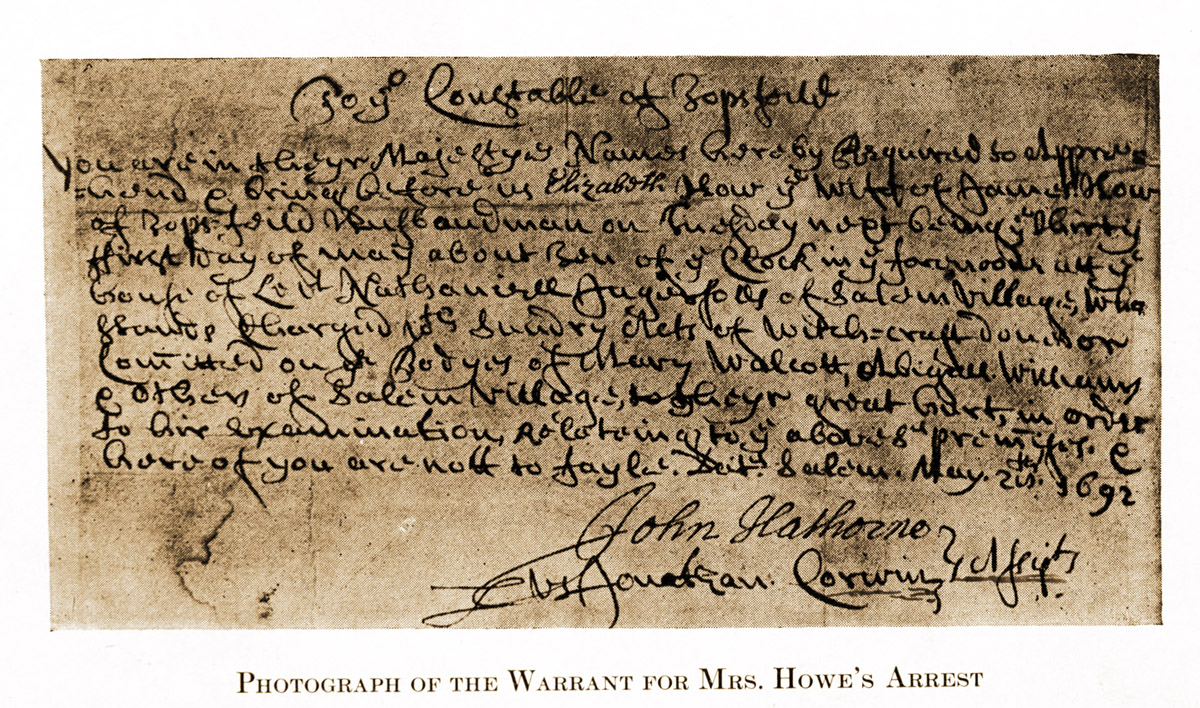

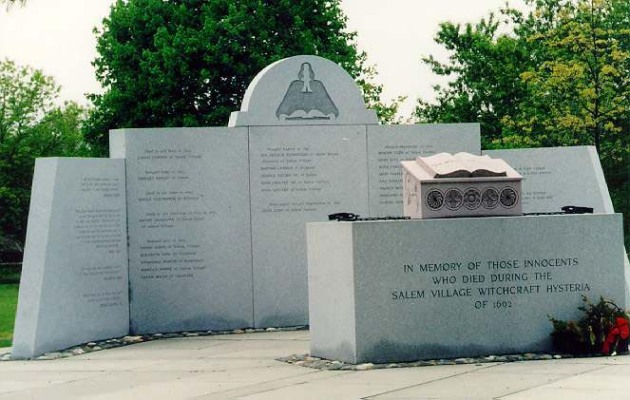
In the Salem Public Library is a short book, “Salem Village Witchcraft–Mrs. Elizabeth Howe’s Trial” (1911) by a Perley descendent, Martin Van Buren Perley. It uses Elizabeth Howe’s case to characterize the Salem witch trials as mean and spiteful accusations by people holding grudges against their neighbors. Perley discusses the accusation and arrest, and the character witnesses and their attempts to exonerate her. It contains a tribute to this God-fearing woman as well as what he was able to piece together about her life. I see the book as an attempt by a Perley descendent to do what his ancestors did not: recant their accusations and seek forgiveness for their actions toward her.
I found a lot of information for my article about Elizabeth Howe in Perley’s book, which you can read online at https://archive.org/details/shorthistoryofsa00perlrich
One of these days I’m going to work out the relationship between M.V.B. Perley and Sidney Perley. Sidney is the better known historian and somewhat more prolific but they both wrote history and genealogy. The Old Linebrook Cemetery was where I first me M.V.B. and the rest of the Perleys, and the Howes, who lie together n death and some of them were even linked in life through marriage and cousinship! Ours is a complicated history at best!!!
Gordon I have a copy of this book.
I stumbled on this story by accident, and it interested me for several reasons. For one, I had written a much shorter story for our local newspaper. Most importantly, I am a Perley descended from the people who killed the alleged witches. According to our family genealogy, called “The Perley Book”, one of John Alden and Prissilla’s daughters married a Perley. One of John Alden’s sons was accused of witch craft, but he escaped. Thus, the Perley’s were on both sides of the case.
Other distant maternal ancestors were Viking enforces in the outer Hebrides. Allen, the Perley who moved to America with some other relatives lived in Wales but married a Danish woman. Its true our family had ancient Danish connections, but how a man in Wales and a woman from Denmark met and married is an unanswered question.
I am also descended from this Perley family ( my mother’s maiden name) & have the book about the trial that was written as a tribute to the Howe family (my copy says that) & the genealogy book of the Perley family by MVB Perley. I have read somewhere that Hannah Perley somewhat recanted her story at some point but her brother took the reigns & was involved in pressing forward with the case against Elizabeth Howe. A horrible outcome to say the least! It appears that Hannah Perley had a real medical condition that was the eventual cause of her early & quick demise. I too am puzzled by Allen Perley’s marriage to a Danish woman.
We visited the area in October & it was amazing to visit the graveyard & see all the Perleys & Howes intermingled.
Thanks for the article. I’m researching my family bloodlines of salem, ma & the witch trials of the accused Elizabeth Howe. My family were the accusers under the family name Cummings. It’s a lot of work researching the history and gynecology!
I am a descendant of Elizabeth Howe and have been fascinated about her history. My daughter and her family
traveled to Salem and the surrounding area, during last summer’s vacation, so that they could visit where all this happened.
I am a descendant of Elizabeth Howe as well as of Simon and Mary Chapman who testified on her behalf.
My grandpa James Howe was a direct descendant of Elizabeth and James. Most of my family keeps the name James or William in the family name. 98% of the boys have James as either first or middle name. Most of the guys are pastors or deacons. About a quarter of us girls are wiccan.
I’m related to you!!! Elizabeth’s husband James Howe was 2nd cousins to my Great great great great great grandfather John Howe who was married to Mary Howe and lived in England. My family has also kept the name James in the family. I hope you see this I would really love to talk to you as I am currently retracing my lineage. My email is jhowe9525@gmail.com. My name is Jessica Howe!
I too am a direct descendant of Elizabeth Howe Jackson (on the Jackson side) Susanna Martin and John Proctor.
My Family has a long History in Danvers and Salem. It is a Beautiful place, but with an Unfortunate Past.
I’m grateful that our Ancestors have been remembered by the Memorials in and around these towns. “Least We Forget”.
https://www.salemhistorical.org/
I am a direct descendant of Elizabeth Jackson Howe and George Jacobs Sr. I knew about Elizabeth, who is on my grandfather’s side. You can imagine my surprise when I discovered that I was also related to George Jacobs Sr on my grandmother’s side! I went on a visit to Salem 9-2018 with my cousin, to go to Proctor’s Ledge, and saw the new memorial, and tried to find the exact spot where they were hung. It was quite a day!
I’m a Cummings descendant. My apologies for what my ancestors did. Obviously I didn’t know them and this is the only thing I know about them. I’m sure using sage to clear my house or having reiki done for health might have put me on the wrong side of my ancestors.
That is wonderful! I’ve been clearing my cords of generational trauma lately also stemming from my Howe line and other lines connected to heavy trauma. I’m descended from the Howes. I’ve worked with Reiki for 20 years now. Your kindness to Linda and all of us decendants of the Howes is so deeply appreciated.
I too am a direct descendant of EJH. She is my grandmother. I am trying to find any picture of her. Has anyone found any?
Mary
Photography didn’t exist in the 17th Century, and I know of no painting of Elizabeth Howe.
Cameras weren’t invented until 1826, so there aren’t any photos
There may have been sketches or paintings done of the trial. You can always talk to the Salem historical society. Elizabeth would have been a cousin of ours. My Great Grandfather was Peter, son of Samuel, who’s other son was David who’s son James was married to Elizabeth.
Elizabeth Howe is my 10th Great Grandmother and I am deeply researching her story and family. My heart breaks for her and what she had to endure. I feel deeply connected to her.
Elizabeth Howe is my 7th great grandmother, and through Target I was able to get the book made from the transcript of her trial. Very interesting. When the Massachusetts governor posthumously pardoned the convicted witches, her daughters brought a special petition insisting that their mother be named in the pardon, and she was. I have a photo of a portrait alleged to be of Elizabeth Howe, I framed and put on my family history wall.
Thank you Jeff. I would like to add the portrait to this post. Please take a photo of the portrait and email it to historicipswich@gmail.com
I sent the photo in an email to the above address.
Hi Jeff, I didn’t receive the email at the historicipswich@gmail.com address. Try sending the photo to my personal email, gordonharris2@gmail.com.
I am a descendent of James Howe, husband of Elizabeth. Fascinating to read the comments of so many others related to this family. I am in possession of a book titled “Filial Tribute tot he Memory of Re. John. M Howe, M.D.” It gives great detail about the Howe family genealogy, occupations, and events from first coming from England to the colonies. The book has been handed down from its compilation through my father’s family to me. It is his paternal grandmother who is related to Mr. Howe, husband to Elizabeth. I would be interested in hearing from other Howe relatives if you are so inclined.